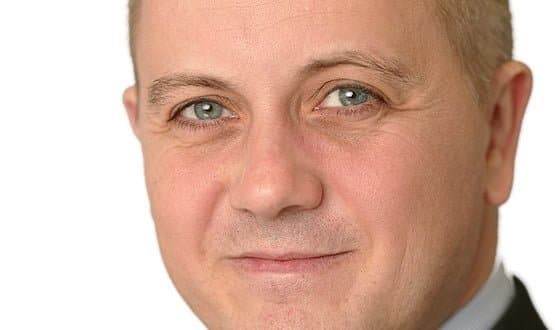The revolution will be digitised
- 18 January 2013

The NHS Commissioning Board’s director of patients and information argues that digital is the biggest single answer to the productivity, quality and efficiency challenges faced by the NHS.
Speaking to eHealth Insider just a week before health secretary Jeremy Hunt announced plans for a paper-free NHS by 2018, Tim Kelsey focused on how he aims to unleash a revolution in the way data is captured and used, making services far more transparent and responsive.
Specifically, Kelsey told EHI he saw three big challenges for the year ahead. The first is radical transparency, particularly on quality and outcomes.
The second is to use digital tools to provide new convenient channels of access accessibility, combined with patient insight.
Finally, and underpinning these ambitions, is the need to achieve a massive cultural shift; a far wider realisation of the power of information to meet the challenges faced by the NHS.
This is a theme he returns to repeatedly; the necessity to carry the medical professions with him and win hearts and minds may be his biggest challenge. The National Programme for IT in the NHS was undermined by failure to do so.
Kelsey has recently run into hot water for suggesting doctors shouldn’t be able to practice medicine if they don’t make use of computers.
While deliberately provocative, it would be difficult to imagine another field of evidence-based endeavor where you could find professionals against technology.
A busy year ahead
With the NHS CB only fully operational from April it promises to be a busy year.
Kelsey started his working life as a journalist and went on to co-found Dr Foster which, in its early days at least, controversial for its publication of the Good Hospital Guide.
More recently, he did a stint as the government’s transparency tsar, pushing the government’s open data agenda. Throughout all this he has retained a profound belief in the power of exposing data to wider gaze.
His planned revolution for the health service will require far, far more patient-level outcomes data to be published and used by commissioners, providers and patients to gain actionable insight on quality and outcomes.
“The first step is data – making transparency happen for commissioners and patients,” Kelsey says. “And that means making the data movable and liquid to make this possible.”
The key, he explains, will be to combine patient data from primary care and secondary care, providing a complete view of patients, and then publish it for use by commissioners.
Initially this will be through care.data, which promises to be one of the key data developments by the NHS CB, and which was outlined as one of its key ‘offers’ to the NHS in the ‘planning guidance’ that it published in December.
“This is the first time this data has been combined. It will take longer than 12-month to complete but the benefits will be very quickly visible.”
Kelsey says an essential part of the NHS CB’s role will be to ensure that this data is used to provide actionable insight to inform commissioners, service providers and patients.
One early example of this is a project to analyse the prescribing of generic drugs, which have the potential to deliver savings when they can be prescribed and safely and effectively as their branded counterparts.
Kelsey says this joined-up picture of patients will also help to address known issues, such as the prescribing of anti-psychotic drugs to dementia patients, which is thought to account for up to 2,000 deaths a year.
By making sure that such data is openly published, the NHS CB is betting that it can catalyse a wave of new innovative service providers, entrepreneurs and creative thinkers, who will take the data to provide new insights and digital services.
“It’s about using data to create new tools that help people make betters choices and better manage their health,” says Kelsey. “It’s about giving people transparency over their own data.”
Let a thousand flowers bloom
The NHS CB will also be cultivating gardens in which to encourage these thousand flowers to bloom.
Another of the ‘offers’ in the planning guidance is a new ‘customer service platform’ for the NHS, replacing NHS Direct and NHS Choices and forming a digital arm for NHS 111.
“The platform will be our offer to access information assets on service, performance and you – your records – and it will be a portal, providing a front door into the NHS through a range of digital channels,” Kelsey says.
He says the first parts of the customer service platform will launch within two months. “We hope to launch some components in March with others later this year.”
In apps we trust
Linked to the portal will be a range of apps. An initial version of the NHS CB’s new app store went live in January, and Kelsey believes that some of what it will hold will be game changers.
“We’ve got a range of amazing apps that people are developing all over the shop that will be transformational to services. Some, like the e-red book for mothers and babies, have the potential to completely transform people’s attitudes to healthcare,” he enthuses.
“They will allow also people to participate like 311 does in the US” [311 is a service delivered through phones, websites and social media that enables people to report problems, seek help from public services, and pitch in themselves].
Radical transparency
A key part of the customer service platform will be to provide mechanisms that enable citizens and patients to provide feedback on the quality of care received, through tweets, questionnaires and other forms of user ratings.
Kelsey argues that the NHS needs to use these new channels and transparency to gain true customer insight and become far more responsive – ideally in real-time; as 311 does in some US cities.
He is evangelical about the potential of real-time customer feedback and insight. He also says that what he has in mind will be different to existing services, such as Patient Opinion or IwantGreatCare, because it will be immediate and have the potential to inform commissioning.
“Patient Opinion allows you to make observations. This will be different, as it provides patient insight in real-time, as they are in waiting room, clinic or A&E department.
“We hope that when patients start reporting problems others will be able to see them online on a map. We think the care provider will want to respond pretty quickly. It will be an incredibly powerful way to get problems fixed quickly.”
Become a real customer service
Kelsey dismisses much of what currently passes for patient engagement and partnership as a tick box exercise. “Patient and public engagement have often been an extraordinarily tokenistic exercise, often amounting to little more than an annual town hall meeting.”
By contrast, harnessing real-time customer feedback the NHS will, like many other sectors before it, “learn to become a real customer service”, and involve patients directly in difficult commissioning decisions.
“We need to give patients real customer insight and properly engage them in their healthcare.” Kelsey says the introduction of the friends and families test in April will provide a vital early milestone.
The coming year will be a testing one for the NHS for many reasons. Just as the reorganisation triggered by the ‘Liberating the NHS’ reforms takes full effect and austerity really begins to bite, the Francis Inquiry into the scandal at Mid Staffordshire Hospitals NHS Foundation Trust will be published.
Politicians are already starting to tell the public what they think that the Francis report will mean; with phrases such as “shameful” being bandied about. Some NHS managers and clinicians are likely to feel bruised by association.
Interestingly, though, Hunt told his Policy Exchange audience last week that another reason for investing in technology was to free up the time to provide the personal care that some wards at Mid Staffs failed to provide.
In line with this, Kelsey says a third challenge for the year will be to win hearts and minds.
He says there is a pressing need for many more NHS clinicians and managers to ‘get’ that digital is “the biggest single answer to the QIPP challenge” [the demand on the NHS meet the financial and other demands on it through quality, innovation, productivity and prevention initiatives].
Winning hearts and minds
Kelsey acknowledged that for many hard-pressed clinicians the big ideas of information transparency and digital participation “don’t resonate”.
The people who need to be won over are not the e-health digerati but those who remain to be convinced.
It is skeptical front-line staff who need to be convinced of the power of information in improving outcomes; “the hard-pressed GP working on the front-line in difficult circumstances, who sees all this as nonsense or a whimsical distraction.”
Kelsey says 2013 will be a year of beginnings on transparency, insight and engagement: “I don’t think we will have finished the job but I think we will have made a good start.”
He concludes: “The programme we’ve set out is the most radical I’ve ever heard about. Care.data and planning NHS Choice squared is unprecedented. I don’t want to go any faster than we already are.”



